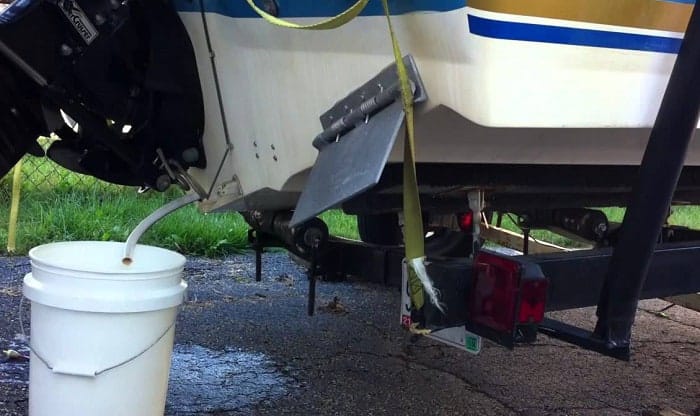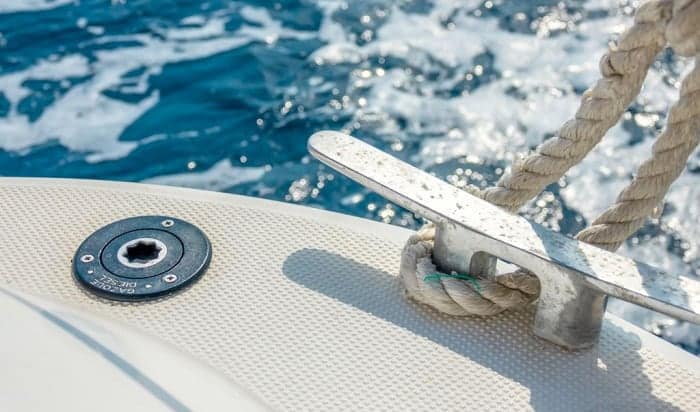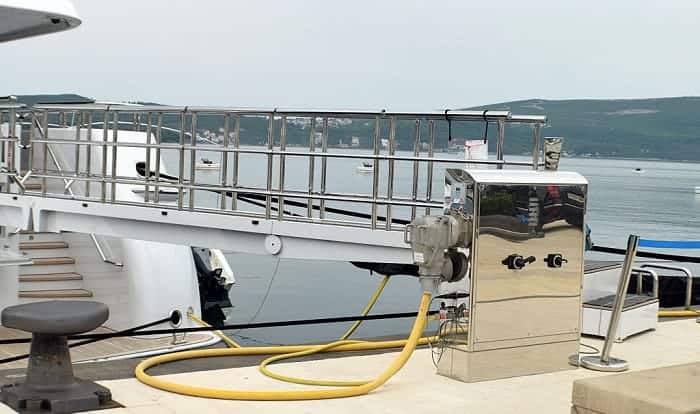Is the offseason for your boat looming around the corner? Are you concerned about any residue buildup in your fuel tank?
There are a lot of reasons you should religiously drain your fuel tank from time to time. To cut costs, you can do it yourself effectively. You only need to know how to drain gas from boat fuel tank in a stepwise manner.
This procedure will reduce your costs on professional fees and cut the budget on repairs if your fuel tank is at risk for potential damage. Knowing how to drain your boat’s fuel tank is a skill you didn’t know you needed.
Your boat’s engine will thank you in the future for keeping its system in great shape.
Table of Contents
- What You Need To Drain Gas From Your Boat’s Fuel Tank
- Steps to Drain Gas From Your Fuel Tank Effectively
- Step 1: Run the boat on the water
- Step 2: Remove the boat on the water
- Step 3: Put on your protective garments
- Step 4: Connect the hose and the fuel transfer pump or primer bulb
- Step 5: Connect the hose to the fuel receptacle
- Step 6: Connect the hose to the fuel tank
- Step 7: Drain the tank
- Step 8: Close the fuel tank and take the fuel receptacle out
- PRO Tips
- Conclusion
What You Need To Drain Gas From Your Boat’s Fuel Tank
Draining gas from your fuel tank can be hazardous. It can cause potential fires if not done correctly. Having these materials will keep these accidents minimal to nil.
Besides protecting your fuel tank from possible damage, you will also need a few materials to keep yourself safe during the entire procedure.
1. Work gloves
This DIY process means you will have to handle the fuel manually. Having gloves will protect your hands from exposure to fuel and other substances.
Get work gloves that fit you well, and try to move your hands and fingers around while wearing one. Try handling the other materials listed below to ensure that the gloves work fine during the procedure.
2. Protective eyewear
Spilling the gas is a possibility during the process. And spilling gas or other substances on the eyes can be dangerous. This material may not be necessary for the draining process, but this is a preventive measure. Work goggles may also work.
3. Face mask
Wearing a face mask will benefit those who are sensitive to smelling gas. A face mask will act as a barrier to the odor from the fuel tank.
4. Fuel hose
A 3/8-inch hose is recommended. You can purchase a 6-feet long one, cut into 2, giving you 3 feet on both sides for drainage. But this will depend on the size of your boat and how big your fuel tank is. You can purchase the 6 feet one and cut it yourself, or have it cut where you bought it.
5. Fuel transfer pump or Primer bulb
A fuel transfer pump is recommended. But these can be costly, and besides, it also needs to be connected to power for it to pump continuously. The whole procedure is a lot easier because you will only need to observe how it drains your fuel tank.
On the other hand, the primer bulb is a device that can manually draw gas from your fuel tank. Pressing it down will then extract fuel or other substances inside. This device can be a hassle as you will manually pump the whole time, but it is less expensive than the fuel transfer pump. It also does not need to be connected to a power source.
6. Hose clamps
This material will keep the hose from spilling out contents onto the primer bulb or the fuel transfer pump. Note that there might be a more specific hose clamp by using the fuel transfer pump, depending on your pump of choice.
7. Screwdriver
It is used to tighten the hose and clamp it together.
8. Fuel receptacle
The gas drained from the tank will flow continuously on this fuel receptacle.
Steps to Drain Gas From Your Fuel Tank Effectively
Step 1: Run the boat on the water
Please turn on the boat and run it on water. This step will exhaust the engine to use up most of its fuel. But do not entirely run it out. You may stop when the fuel is around 1/8 of the tank. An alternative way to run it on the water is by using water muffs.
Step 2: Remove the boat on the water
After running the boat, you can now turn it off and get it out of the water. Place it on the trailer and drive it to your preferred location. Make sure that this area is level.
Step 3: Put on your protective garments
At this point, you can put on your work gloves, protective eyewear, and face mask for protection.
Step 4: Connect the hose and the fuel transfer pump or primer bulb
Place one hose to connect to the fuel transfer pump. Depending on your fuel transfer pump, this may need another connector.
Connecting the hose to the primer bulb is easy; you only need to tighten it with the hose clamp. Use the screwdriver to do so. Connect the other hose to the other end of the fuel transfer pump or the primer bulb. Secure the hose with the hose clamp using your screwdriver.
Step 5: Connect the hose to the fuel receptacle
On one end of the hose, connect it to the fuel receptacle. This vessel will catch the drainage from your fuel tank.
Step 6: Connect the hose to the fuel tank
Remove the cover of the fuel tank. The other end of the hose may be directly connected to the fuel tank until it reaches the fuel. Make sure that the hose can reach down the whole tank.
Step 7: Drain the tank
At this point, you may start turning on your fuel transfer pump with a power source. It will then drain your fuel tank automatically. If you are using the primer bulb, squeeze it tightly to start draining your tank. Continue pressing around using the hose until all of the fuel is removed.
Step 8: Close the fuel tank and take the fuel receptacle out
After draining gas out of the fuel tank, you can remove the hose and shut it close with its cap. Discard the gas properly and do the appropriate aftercare. You can now drive your boat on its trailer and back to its storage area.
PRO Tips
- Always wear your protective garments whenever draining gas from your fuel tank.
- Do not clean nor drain your fuel tank nearby flammable materials. Keep flammable spray cans and other fire hazards away from where you will drain your tank.
- You can tip the fuel tank body to ensure that everything is drained out. You can also tilt the whole boat at an angle that will favor draining the fuel tank.
- Have a fire extinguisher at hand in cases of emergency.
Conclusion
Did you find this tutorial enjoyable and comfortable? Draining your fuel tank can be a stress-free task if you have the right materials with you. The step-by-step guide on how to drain it properly will save you from paying other professionals. Knowing how to drain gas from boat fuel tank is an essential skill.
You will never know when your fuel tank might have possible water contamination, so doing it on your own can keep further damage from happening.
What do you think of these easy-to-follow steps? If you enjoyed reading along, you could share this with your friends and family who might find these steps to be helpful and enjoyable at the same time. This article might be in time for your boat owner friends to check on their fuel tanks and give it a drain.

“I am James Harvey – founder of Boating Basics Online. It is established with the drive to help out first-time boaters, which are those desiring to explore their way through the water. So if you are new to boating, start from here with me. “



